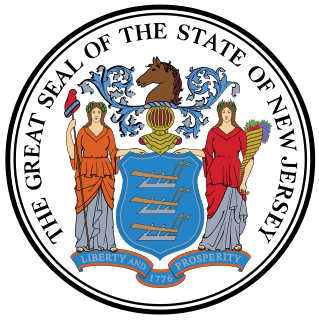
The New York gubernatorial election of 2006 took place on November 7, 2006 to elect the governor and lieutenant governor of New York, concurrently with elections to the United States Senate in other states and elections to the United States House of Representatives and various state and local elections. Democrat Eliot Spitzer, the New York Attorney General, won the election, succeeding incumbent Republican Governor George Pataki, who did not run for a fourth term.

The New York gubernatorial election of 2002 was held on November 5, 2002. Governor George Pataki, the two-term Republican incumbent, ran for a third term. Governor Pataki was re-elected to a third term, defeating Democrat Carl McCall and Rochester billionaire Tom Golisano. As of 2019, this is the most recent election in which a Republican was elected Governor of New York.

The 1910 South Carolina gubernatorial election was held on November 8, 1910 to select the governor of the state of South Carolina. Coleman Livingston Blease won the Democratic primary and ran unopposed in the general election to become the 90th governor of South Carolina.

Elections in New Jersey are authorized under Article II of the New Jersey State Constitution, which establishes elections for the governor, the lieutenant governor, and members of the New Jersey Legislature. Elections are regulated under state law, Title 19. The office of the New Jersey Secretary of State has a Division of Elections that oversees the execution of elections under state law. In addition, the New Jersey Election Law Enforcement Commission (ELEC) is responsible for administering campaign financing and lobbying disclosure.

The 1918 New York state election was held on November 5, 1918, to elect the Governor, the Lieutenant Governor, the Secretary of State, the State Comptroller, the Attorney General, the State Treasurer and the State Engineer, as well as all members of the New York State Assembly and the New York State Senate.

The 1854 New York state election was held on November 7, 1854, to elect the Governor, the Lieutenant Governor, a Canal Commissioner and an Inspector of State Prisons, as well as all members of the New York State Assembly.

The 1862 New York state election was held on November 4, 1862, to elect the Governor, the Lieutenant Governor, a Canal Commissioner, an Inspector of State Prisons and the Clerk of the Court of Appeals, as well as all members of the New York State Assembly.

The 1876 New York state election was held on November 7, 1876, to elect the Governor, the Lieutenant Governor, a judge of the New York Court of Appeals, a Canal Commissioner and an Inspector of State Prisons, as well as all members of the New York State Assembly and two members of the New York State Senate. Besides, two constitutional amendments were proposed - to abolish the elected Canal Commissioners and appoint a Superintendent of Public Works instead; and to abolish the elected New York State Prison Inspectors and appoint a Superintendent of State Prisons instead - and both were accepted by the electorate.

The 1846 New York state election was held on November 3, 1846, to elect the Governor, the Lieutenant Governor and two Canal Commissioners, as well as all members of the New York State Assembly and eight members of the New York State Senate.

The 1777 New York gubernatorial election was held in June 1777 to elect the Governor and the Lieutenant Governor.

The 1816 New York gubernatorial election was held in April 1816 to elect the Governor and Lieutenant Governor of New York. Governor Tompkins had received the nomination of the Congressional Caucus for Vice President as James Monroe's running-mate. Senator King would receive the votes for President of those Federalist Electors chosen that fall.

The 1820 New York gubernatorial election was held in April 1820 to elect the Governor and Lieutenant Governor of New York. Governor Clinton was the incumbent. U.S. Vice President Tompkins had been governor from 1807 to 1817. Tompkins would be re-elected vice president, in November 1820.

The 1970 New York gubernatorial election was held on November 3, 1970 to elect the Governor and Lieutenant Governor of New York. Incumbent Republican Governor Nelson Rockefeller defeated the Democratic nominee, former UN Ambassador and Supreme Court Justice Arthur Goldberg by more than ten percentage points. On January 1, 1971, he was sworn in for his fourth term as governor.

United States gubernatorial elections were held on November 7, 2017 in two states: Virginia and New Jersey. These elections formed part of the 2017 United States elections. The last regular gubernatorial elections for these two states were in 2013. Both incumbents were term-limited, so both seats were open. Democrats held the governorship in Virginia and picked up the governorship of New Jersey.

The 2018 New York gubernatorial election occurred on November 6, 2018. Incumbent Democratic Governor Andrew Cuomo won re-election to a third term, defeating Republican Marc Molinaro and several minor party candidates. Cuomo received 59.6% of the vote.

The 1982 Georgia gubernatorial election was held on November 2, 1982. Joe Frank Harris was elected as the 78th Governor of Georgia.

The 1997 United States elections were off-year elections were held on Tuesday, November 4, 1997, comprising 2 gubernatorial races, 3 congressional special elections, and a plethora of other local elections across the United States. No Senate special elections were held.

The Tennessee gubernatorial election of 1807 took place from August 6 - 7, 1807. Sevier won his final term as governor of Tennessee with 85.80% of the vote against Senator William Cocke.

United States gubernatorial elections were held in 1921, in two states.




















